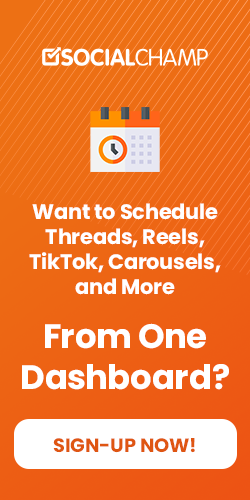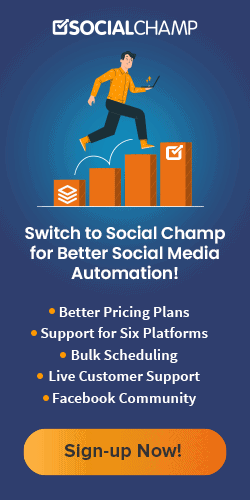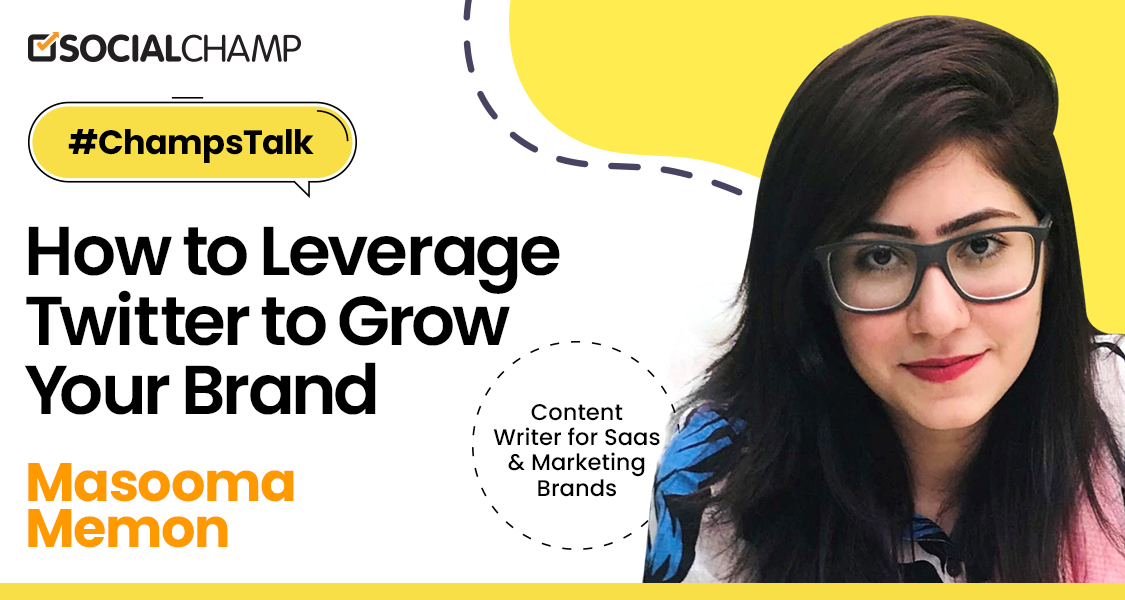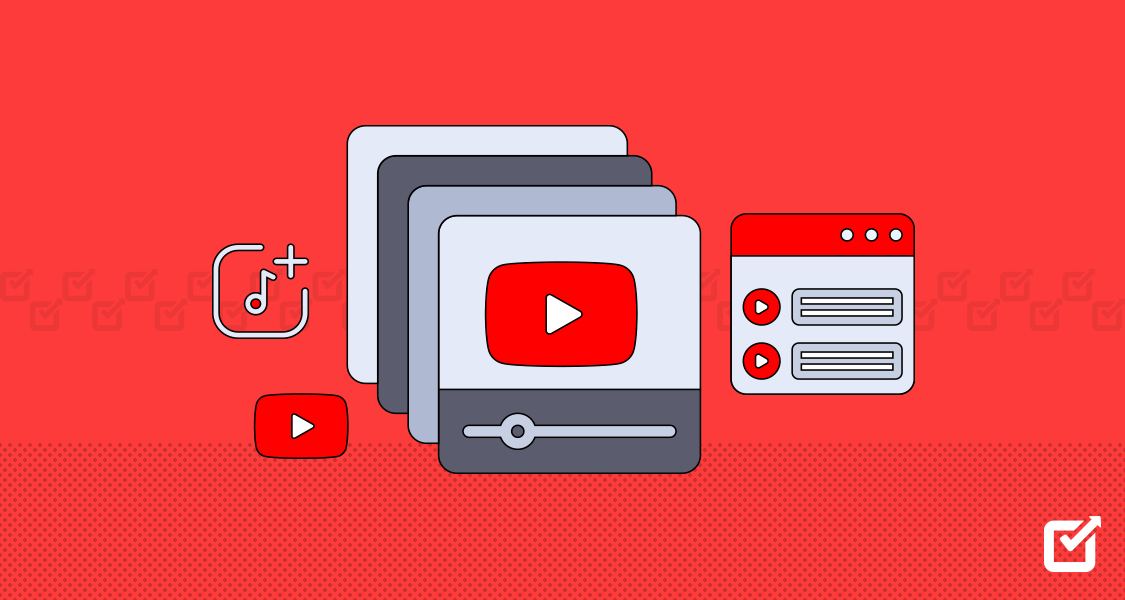User Generated Content (UGC) is rapidly coming to rise. Research says 95% of consumers only buy a product when they read reviews. Hence, it’s safe to say that it will be one of the top trends in 2024 that will take brands to new heights. Another interesting statistic is that 76% of buyers say that they buy something when they see it on social media. Thanks to the latest social media updates, there are even better ways to create User Generated Content (UGC).
Not to scare anyone, but 2024 is right around the corner, and it’s time brands take advantage of this opportunity. With the help of Social Champ’s social media management tool, brands can monitor analytics with an all-in-one dashboard experience. For any buyer, it is very important to trust a brand only if it is genuine. How do they know if it is? Reviews, reviews, and more reviews! User Generated Content holds a huge role in gaining consumers’ trust. Hence, we have a list of 10 reasons why and how brands should focus more on this in 2024.
What Is User-Generated Content and Why Is It Important
Before we directly take you to the list of reasons, it is important to know what makes user-generated content necessary. Let’s put it this way: why do you even need UGC when brands are already spending millions of dollars on creating their own brand content anyway? Validation! When products or services are rightfully given a green signal on social media, buyers take less than a second to purchase them right away.
Don’t believe us? Research backs this up, evidently! Media Spiegel states there’s a 68% chance that buyers will not buy a product that does not have a 5-star rating. Shocking right? The majority of buyers would prefer choosing brands with a better rating than none.
Looking For Ways to Make Your User Generated Content Stand Out?
Social Champ has got all the solutions to your content-related needs!
Benefits of User Generated Content (UGC)
- Authenticity
User generated content (UGC) makes a brand’s image seem more authentic. It adds more real experiences and customer opinions that foster buyers’ trust. Research backs this by proving that 79% of consumers believe their buying decisions are assured by seeing user generated content rather than influencer content.
- Engagement Boost
With the help of social media listening, brands can listen to what customers say about their products. As a result, active participation from the audience fosters a sense of community and increases overall engagement on social media.
- Cost-Effective Marketing
Leveraging content creation by users can significantly lower marketing costs. How? Research proves that if brands add user generated content in their social media ads instead of their own content, it reduces the Cost-per-click (CPC) by 50%.
- Influential Social Proof
Customers trust brands when there is actual support for the brand’s products out there. For this, UGC serves as a powerful form of social proof that influences potential customers’ perceptions. With the help of showcasing real-world product usage and positive experiences, it can actually make an impact.
- Insightful Analytics
The last benefit is that analytics allows brands to gain valuable insights into consumer behaviour, performances, and trends. Likewise, it also helps refine marketing strategies to meet customer expectations and product offerings.
Featured Article: 10 Meaningful Ways to Get More Twitter Followers in 2025
User Generated Content Tips to Remember
User Generated Content (UGC) will be out there for a long time. Brands that want to win the hearts and loyalty of consumers should create a really good UGC content strategy. To achieve this, there are a few tips to keep in mind:
Word of Mouth Gets Around Faster Than Lightning
It’s a fact, and there’s nothing that will ever change this or alter it. People talk. They gossip. They discuss. It’s human nature, and this is why creating a positive outcome is super important. Now that communication around the globe is becoming easier day by day, having a good user generated content strategy can help make things go well. Once the product is in line and good enough to be showcased to the world, one positive word will take the brand on the crest of a wave.
Focus More on Customer Relatability, Not Self-Promotion.
Although this is a general point, some brands go overboard with self-promotion. Yes! Even in 2023, brands are still doing this. However, with a good user generated content strategy, brands can ensure they align with more of what customers desire rather than who they are.
Real vs. Fake Ugc: It’s Easy to Find Out.
It’s important to be careful when creating a good UGC. The audience can easily identify what’s fake and what’s real. This can easily tarnish a brand’s reputation and most likely end up as a meme on social media. Why even fake it when there are multiple ways of getting real reviews? It can be employees advocating with up-close insights, consumers vouching for the products, or loyalists ready to throw in some good words. It’s time-saving and cost-effective and adds more originality and trust.
A Golden Opportunity to Gain Trust and Create Value
A humanised brand promotion helps create a bond with potential buyers seeking value. Telling why there is a need for the brands won’t just do enough. Creating value in a consumer’s mind is art! It’s like painting a picture in mind from scratch, making buyers visualise, fantasise, and finalise buying a product. This is how brands can gain trust and create value for their customers.
More Reach and Conversions
The main challenge for brands is to target as many conversions and reach as they can. When brands focus on creating relatable content online, it helps increase conversions and reach. For customers, the final decision relies on what appears on their social media profiles. It takes one look, and voila! A long list of successful conversions and reach starts flooding in. Most of the brands focus on product-centric promotions. Maybe experimenting with posts with a great storyline by influencers won’t hurt?
Community Building
Taking your brand promotion to the next level requires effort and dedication. Many brands are already focusing on building communities where only user generated content is specifically showcased. Think of customers as secret agents who are desperately on the hunt for investigating all about what brands do, sell, breathe, and literally anything. For this, the best way is to focus on community building, where all the brand-related information and promotion are present.
Personalization
Who doesn’t love seeing up close and realistic insights for things that are high in demand? Customers find reasons to trust brands when they find something that appeals to them. Whether as tiny as a pin or as large as the Empire State Building, customers only take the next step when they see people talking and sharing their feelings online.
From a buyer’s perspective, it’s not about how good the item would look on them; it’s the feeling. To further push into making a final decision, brands can include discount codes or offers that convince buyers to go for it. This overall creates a good impression at first attempt that brands are offering coupons to first-time purchasers, leading to a successful conversion.
Improves SEO
With user generated content, brands can significantly boost improvements in SEO. While branded content results in a fair amount of SEO, UGC brings in more traffic and conversions. How does it work? By incorporating UGC into blogs and articles, SEO would rank them at the top of search engines and show authenticity to customers looking for answers.
A great way to boost a higher ranking for improving SEO would be to showcase the testimonials on social media profiles and websites. This will help in getting more impressions, leading to conversions.
Emotionally Appealing
Without adding any emotional appeal, there is no desire to take any action. Buyers simply scroll up and skip the content. UGC can impact the toughest buyers even with just a nudge of emotion into the brand’s products. With the help of a good storyline that the audience can relate to, customers tend to become loyal and have a trustworthy relationship.
Branded content can be easy to appeal to but not easy to spark zeal in buying decisions. Hence, this is where brand loyalists and advocates can play their roles in convincing buyers to be able to trust and decide.
Rapid Content Creation
The last reason to list down is rapid content creation. It takes the right marketing strategy to evoke customers by promoting user generated content on their feeds. The best practice for rapid content creation is sponsored content. It creates Genuity.
The more loyal customers a brand has, the more a brand gets rapid growth with content creation. One way to manage content creation would be by using Social Champ’s Social media management tool, which helps in measuring performance and managing content with the help of AI-powered integrated tools.
8 Examples of User Generated Content and Ideas
- Images:
Taking photos encourages customers to share themselves using brand products or services. The best example is the Barbie movie’s successful marketing campaign that took many social media platforms by storm. Inspiring millions of people and reviving the Barbie fashion, the famous Hollywood star Margot Robbie wore Barbie outfits to movie promotions, red carpets, and movie premieres, leading to a massive trend on social media.
Tip: Running photo contests or challenges with relevant brand hashtags can help make the UGC look better. In what way? It stimulates creative and visually appealing content.
- Reels/Vlogs
Reels and videos are the top-performing content on social media. They are expected to trend in 2024 as well. Brands can prompt users to create short video clips or vlogs showcasing their experiences with the brands they are promoting. Mercedes-Benz recently set a viral trend for their bounce feature in the GLE Coupe range, called “Mercedes Bounce” on social media.
Tip: Brands can create a marketing strategy where brand loyalists perform themed challenges that inspire users to share their videos on platforms like Instagram reel or YouTube.
- Blogs
Written UGC can be super helpful in brand promotions. Customers can write blogs on behalf of brands and share their detailed personal experiences with the products and services. Tommy Hilfiger has a dedicated section on their website for promoting blogs with customers promoting their fashion.
Tip: brands can add these user-written blogs onto their websites or collaborate with influencers willing to contribute to this brand promotion technique.
- Podcasts
Podcasts are another trending type of user generated content. They are surely going to be all over social media in 2024, too. With the help of podcasts, brand advocates can create episodes or sessions discussing topics related to the brands or relevant industries, mentioning the brand and its product offerings. Microsoft has its own podcast, called .future that talks about the current trends in technology and how it’s impacting human lives.
Tip: Brands can feature customers’ podcasts on their official channels or collaborate with existing podcasts to discuss the brand.
- Live Sessions
Hosting live sessions is another great idea for creating UGC. Platforms like Instagram, Facebook, or Youtube allow users to start live sessions and even include others to join and interact in real-time. A good example of a brand using Instagram’s live session feature for its brand promotion is “Origins,” the famous cosmetic brand.
Tip: Conduct Q&A sessions, product demos, or behind-the-scenes (BTS) to engage the audience and show an up-close insight into the brand.
- Brand Reviews
For testimonials, brands can request customers to write and share detailed reviews about how they feel after using the product or experiencing their services. Some brands take it to the next level, like dove does. They ask customers to share testimonials and compile it in a video to show as TV commercials.
Tip: Brands can showcase these reviews on their websites and marketing materials to build trust amongst the community.
- Tweets
The best way to make your tweets go viral is to create branded hashtags to encourage users to share their thoughts, experiences, or photos related to the brands. KFC recently promoted chicken wraps with a “two for $5” offer on their official X (Twitter) account.
Tip: Engage with and amplify user tweets to foster community.
- Endorsements
The last one on the list is endorsements. Brands can reach out to their top, most loyal brand advocates and seek permission for testimonials in their marketing materials. A recent endorsement by the famous fashion brand Versace with Dua Lipa, the famous award-winning English singer has helped the brand in their promotion for the Lavancza women’s collection 2023.
Tip: Feature endorsements in advertising campaigns or on product packaging or added credibility.
Related Article: Top Influencers Ruling the Social Media World Right Now in 2025
5 User Generated Tools to Try in 2025
TaggBox

If brands want to focus on visually appealing displays and curate content across all social media channels, Taggbox is the right tool. Creating genuine UGC requires customizable widgets, like social walls and galleries, that can be embedded on websites, event displays, and digital signages.
Similarly, this tool facilitates the creation of UGC contests and campaigns that allow users to participate actively. With the help of tools like Taggbox, it allows moderation to ensure the content is appropriate and relevant enough once it is showcased on both online and offline channels.
With content creation and showcasing comes monitoring analytics. Taggbox provides a robust analytics dashboard that allows audience engagement, tracking UGC campaign performances, and much more. With all this information, brands can also measure the overall impact of the user-generated content’s marketing strategy. This helps refine the brand approach, ensuring all efforts align with the broader business goals.
TINT

This UGC tool allows the collection of content from all social media channels and displays it in customizable feeds. Brands can modify content, curate feeds based on hashtags or keywords, and embed these displays on websites, event screens, or other digital touchpoints.
What sets TINT apart is the unique feature of rights management, which ensures brands have a hold on proper permissions before being allowed to showcase user generated content. This is important as it heavily relies on legal compliance and respecting the intellectual property rights of the content creators.
Likewise, the analytics tool of TINT provides key insights on user engagement that help brands understand the impact UGC is having on their audience. Is this tool suitable for just any brand? Depends if the businesses are aiming to create socially connected and immersive experiences.
Bazaarvoice

Every brand has a different aim when it comes to its marketing strategy. Some brands prefer UGC tools that only allow curating and creating visual content. But then there are tools, such as Bazaarvoice, that specifically keep a focus on one area and make it stand out.
With the help of advanced image recognition technology, Bazaarvoice can identify and collect relevant visuals based on specific criteria. This helps brands find and curate user generated content related to their products on all social media platforms.
Not only this, but Bazaarvoice has another unique feature that turns UGC into a direct sales channel via its shoppable content feature. The audience can click on the tagged products within the UGC photos, which leads them directly to the product pages to make a purchase right away.
Also, brands can monitor the visual content performance via analytics feature which can help in understanding whether the UGC resonates with their audience. This tool is best for brands looking to generate sales directly from their UGC visuals.
Yotpo

Yotpo stands out a little differently as compared to other UGC tools. With the option to leverage customer reviews, Yotpo helps enhance brand credibility through exceptional visual marketing. Yotpo has its own in-mail review feature that encourages customers to post reviews, ratings, and feedback directly onto their website via post-purchase emails.
Like the rest of the tools, Yotpo can curate and display visually appealing content in the form of photos and videos on the product pages. This helps in creating an overall great customer experience in terms of shopping which eventually leads to getting potential buyers to see how current buyers are enjoying the products.
Is there something different that Yotpo is doing comparatively? Yes! Yotpo allows AI-powered sentiment analysis that helps categorize and understand customer sentiments through their reviews. This allows brands to analyze room for improvements, identify trends, and highlight positive aspects of the marketing strategy.
Pixlee

The last one on the list is Pixlee, which focuses on creating authenticity in brand experiences. It’s a fact that customers seek validation when choosing particular brands. For this, Pixlee focuses on providing tools for collecting and showcasing UGC. This can be in the form of photos, videos, reviews on websites, product pages, and other digital platforms.
With the help of AI-powered visual recognition technology, Pixlee helps brands discover and curate UGC based on particular visual attributes. This ensures that the most relevant and engaging content is featured on top.
Also, Pixlee’s platform can integrate e-commerce systems, enabling brands to turn user generated content into shoppable experiences. This option enhances the customer journey by connecting UGC with a purchasing process.
Conclusion
To sum up, user generated content will be trending wildly in 2024. If you ask us, we would say now is the time to pick the right tool for managing and using creative and captivating user generated content. The process can be a bit time-consuming, but with the help of keeping the above reasons in mind, brands can save time and effort in planning marketing campaigns. Getting on board with brand collaborations and sponsored content will benefit both brands and customers for their social presence on social media platforms. So why not work and go for it?















1 thought on “10 Reasons to Switch to User Generated Content (UGC) in 2025”
Fantastic read! Your reasons are convincing, and I’m all in for UGC.